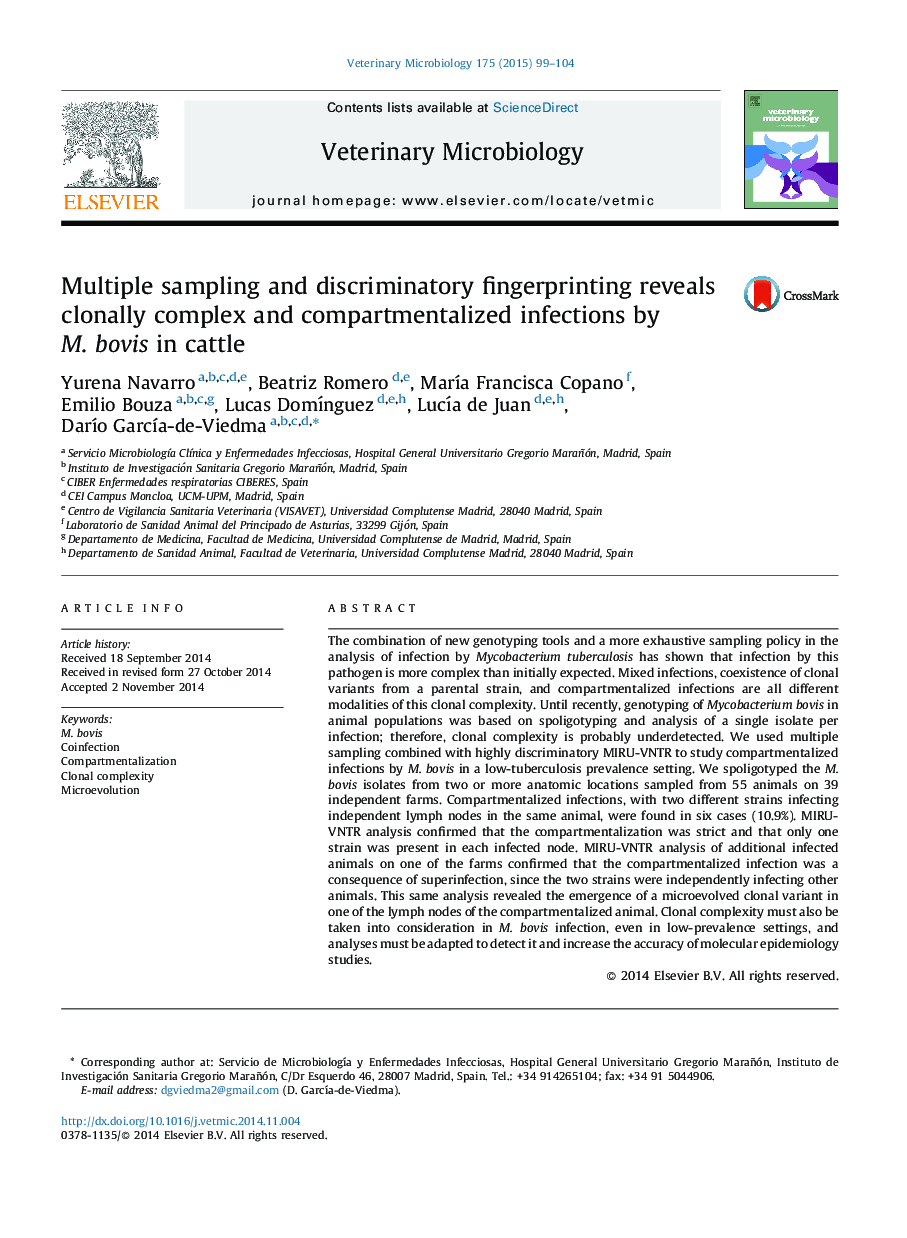| کد مقاله | کد نشریه | سال انتشار | مقاله انگلیسی | نسخه تمام متن |
|---|---|---|---|---|
| 2466567 | 1111937 | 2015 | 6 صفحه PDF | دانلود رایگان |

• Standard genotyping schemes underdetect clonal complexity in Mycobacterium bovis infection.
• Multiple sampling and MIRU-VNTR analysis detected clonally complex infections by M. bovis.
• We found compartmentalization (different strains in independent lymph nodes) in 10.9% of the animals.
• The compartmentalized infections were a consequence of superinfection.
• Clonal complexity must also be taken into consideration in M. bovis infection.
The combination of new genotyping tools and a more exhaustive sampling policy in the analysis of infection by Mycobacterium tuberculosis has shown that infection by this pathogen is more complex than initially expected. Mixed infections, coexistence of clonal variants from a parental strain, and compartmentalized infections are all different modalities of this clonal complexity. Until recently, genotyping of Mycobacterium bovis in animal populations was based on spoligotyping and analysis of a single isolate per infection; therefore, clonal complexity is probably underdetected. We used multiple sampling combined with highly discriminatory MIRU-VNTR to study compartmentalized infections by M. bovis in a low-tuberculosis prevalence setting. We spoligotyped the M. bovis isolates from two or more anatomic locations sampled from 55 animals on 39 independent farms. Compartmentalized infections, with two different strains infecting independent lymph nodes in the same animal, were found in six cases (10.9%). MIRU-VNTR analysis confirmed that the compartmentalization was strict and that only one strain was present in each infected node. MIRU-VNTR analysis of additional infected animals on one of the farms confirmed that the compartmentalized infection was a consequence of superinfection, since the two strains were independently infecting other animals. This same analysis revealed the emergence of a microevolved clonal variant in one of the lymph nodes of the compartmentalized animal. Clonal complexity must also be taken into consideration in M. bovis infection, even in low-prevalence settings, and analyses must be adapted to detect it and increase the accuracy of molecular epidemiology studies.
Journal: Veterinary Microbiology - Volume 175, Issue 1, 30 January 2015, Pages 99–104